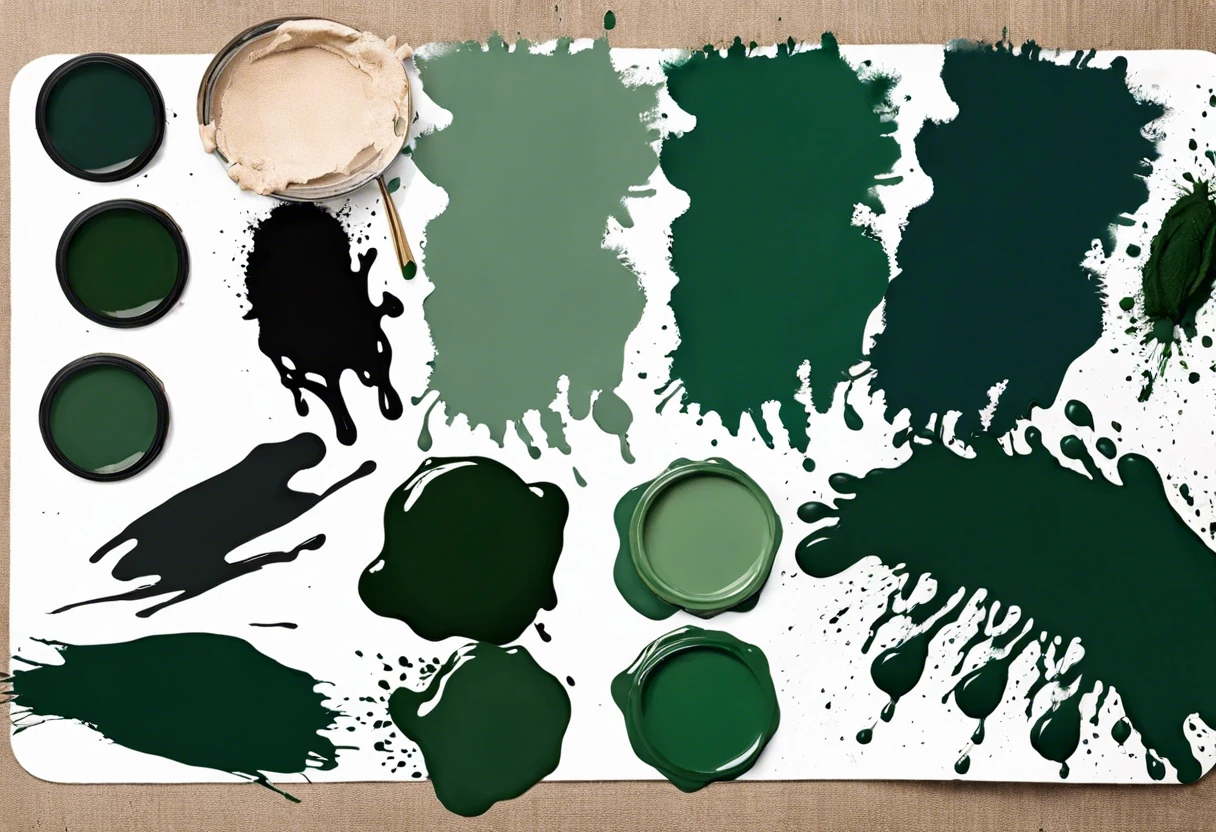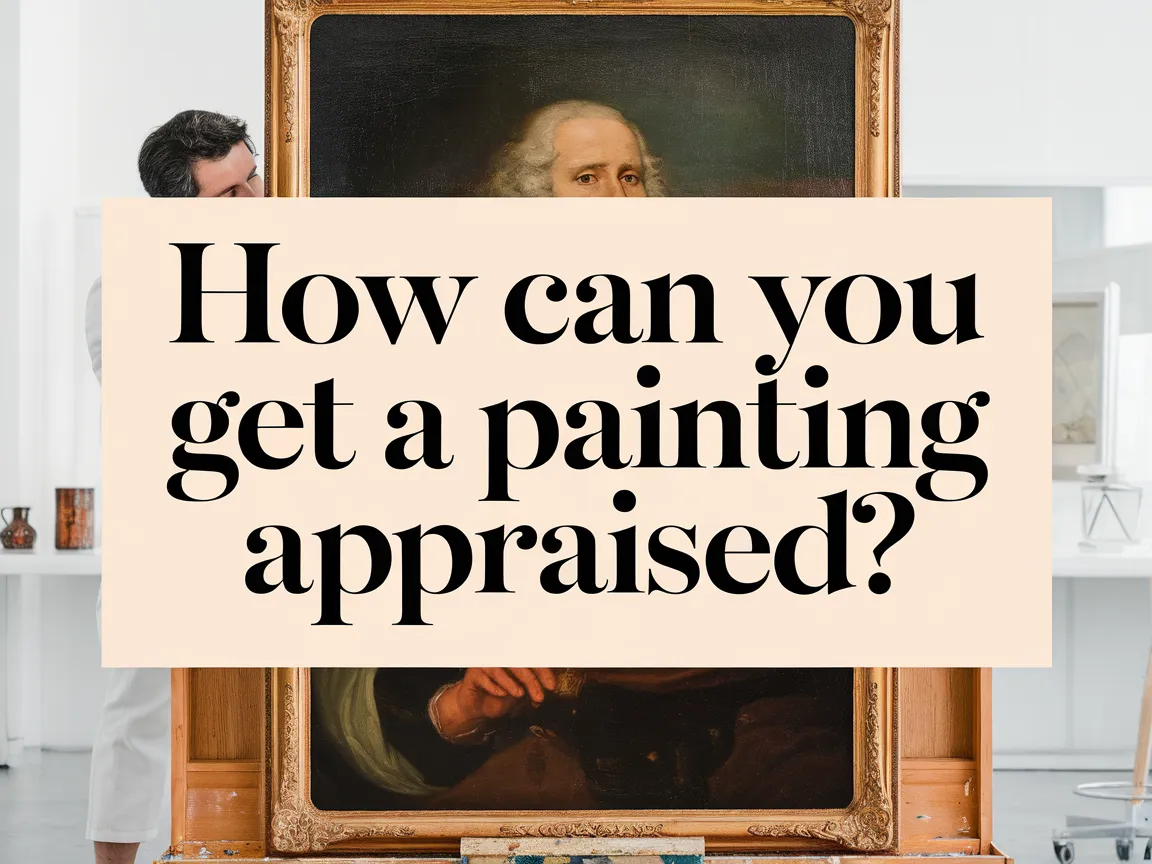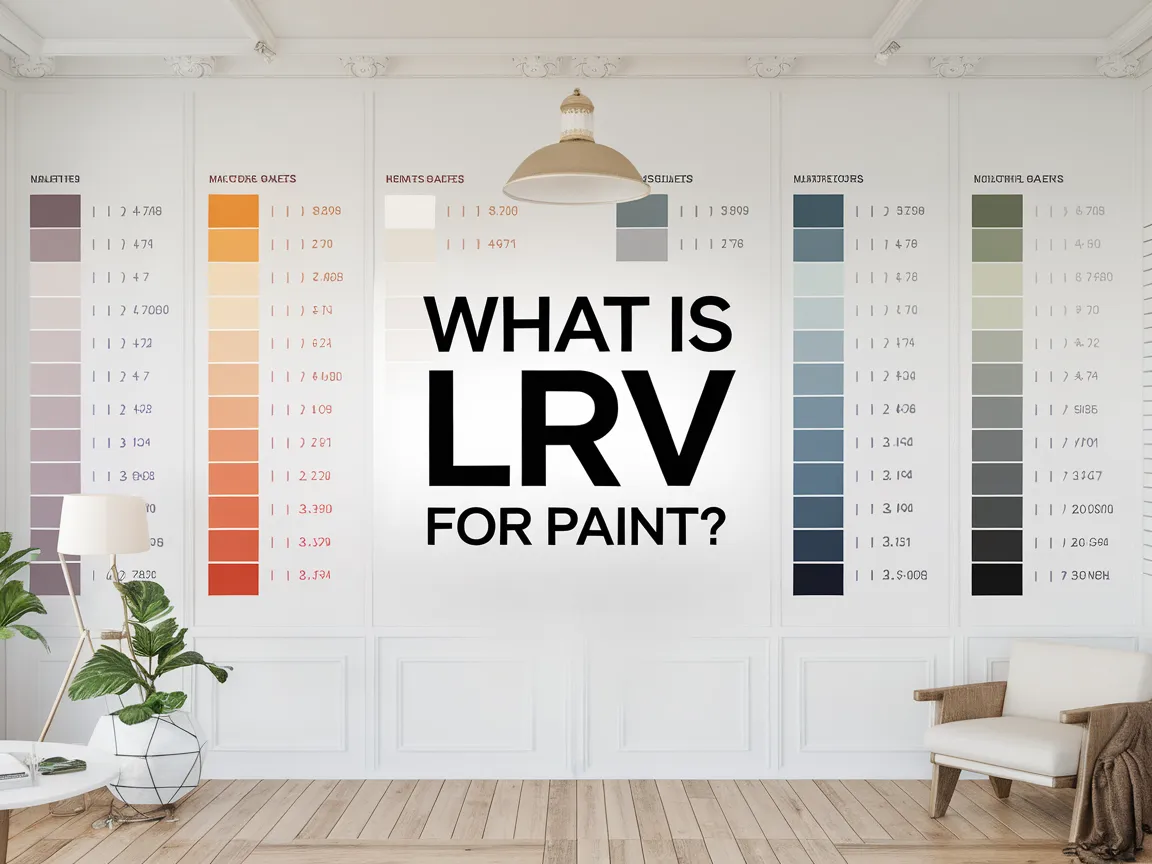How Do You Make Dark Green Paint?
Dark green paint is a rich color like the deep leaves in a forest. It’s what gives life to your artwork and makes things feel lush and vibrant.
So, how do you make dark green paint colors? It’s crucial to follow the steps closely, or your shade might end up a bit off. From my experience, mixing the right colors can be tricky, but it’s rewarding when you get it just right!
In this guide, we’ll explore essential preparations, the step-by-step process of creating dark green paint, recommended color palettes, various types of dark green, and common issues you might face. You’ll finally know how to make dark green paint as well as learn about making other shades, like how to make grey paint or how to make darker green paint.
Contents
- 1 How Do You Make Dark Green Paint?
- 2 What is Dark Green Paint?
- 3 Essential Preparations Before You Start Making Dark Green Paint
- 4 Step-by-step Process to Create Dark Green Paint
- 5 Recommended Color Palette for Dark Green Paint Projects
- 6 Understanding Color Theory for Dark Green Paint
- 7 Types Of Dark Green Paint You Can Create
- 8 Factors Affecting Your Dark Green Paint Mixing Outcome
- 9 Common Issues When Making Dark Green Paint and How to Resolve Them
- 10 Finishing Touches That Enhance Your Dark Green Paint
- 11 Color Context: When to Use Dark Green Paint
- 12 Frequently Asked Questions About Making Dark Green Paint
- 13 Conclusion: Mastering the Art Of Creating Dark Green Paint
- 14 Additional Resources
How Do You Make Dark Green Paint?
To create dark green paint, mix equal parts blue and yellow paint. For a deeper hue, add a touch of black or brown. Adjust until you achieve your desired shade. Easy, right?
The Finishing Touch
A freshly painted wall is a blank canvas. The best way to bring your room to life is with a single piece of statement art that ties everything together.
Browse Wall Art at Big Wall DecorWhat is Dark Green Paint?
Dark green paint typically consists of green pigments mixed with black or blue to create depth. These paints have a light reflectance value (LRV) of about 10-20%, making them an excellent choice for rich, dense shades. If you’re looking to apply this color to specialized surfaces like airsoft equipment, you might want to explore professional painting techniques for gear.
If you’re wondering how to create this captivating color, start with a base of green paint and blend in darker pigments. My twist? I usually add a splash of blue for extra richness.
I’ve seen people use it to create moody, calming spaces. When I painted my studio, the dark green walls and bright natural light gave me exactly the vibe I wanted and inspired me. Learning to make darker green paint opens up a palette of possibilities, like mesmerizing forest-themed art projects! If you’re considering painting different surfaces, you might want to explore painting aluminum storm doors for a fresh home update.
Essential Preparations Before You Start Making Dark Green Paint
What do you need to prepare for?
- High-Quality Blue Pigment: Use a strong blue pigment like Prussian Blue or Ultramarine for a vibrant undertone in your dark green.
- Yellow Pigment: A quality yellow pigment, such as Cadmium Yellow, is essential for mixing greens effectively. It affects the shade and brightness of your dark green paint.
- Palette and Mixing Tools: Have a palette, like a wooden or plastic mixing board, and a set of spatulas or palette knives ready to blend the pigments evenly.
- Clear Medium: Use a clear glazing medium, like Liquitex Gloss Medium, to enhance the paint’s flow and consistency during mixing.
- Pipette or Measuring Spoon: A measuring tool like a pipette or spoon ensures you mix the right ratios of pigment. Accuracy is key for achieving the desired color.
We have now covered essential preparations for making dark green paint. Next, we will discuss the step-by-step process to create it.
Also See: Can You Chalk Paint Over Polyurethane? Get the Facts!

The Finishing Touch
A freshly painted wall is a blank canvas. The best way to bring your room to life is with a single piece of statement art that ties everything together.
Browse Wall Art at Big Wall DecorStep-by-step Process to Create Dark Green Paint
Here’s a concise guide to mixing dark green paint. Follow each step closely and let your creativity flow.
-
Choose Your Base Colors
Select high-quality blue and yellow paints. Use equal parts of both to create a rich, vibrant base for dark green.
For a striking mix, use a medium blue like cobalt blue (RGB: 60, 139, 190) paired with a strong yellow like cadmium yellow (RGB: 255, 215, 0). This combo is key!
-
Mix the Paint Colors
Use a palette to squeeze out equal amounts of blue and yellow. Blend the paints thoroughly with a palette knife until you achieve a uniform shade.
To deepen the dark green, add a touch of ultramarine blue or a hint of burnt umber. Small adjustments can lead to impressive results.
-
Adjust the Shade for Depth
Slowly add a drop of black paint while mixing. This darkens the green and adds depth to the color.
Be cautious! Too much black can create a muddy color. Add just a few drops at a time and check the shade regularly.
-
Test the Mixture
Apply a small amount on a canvas to see the true color. This helps you visualize how it’ll look on a larger scale.
If needed, adjust the mixture with more blue for a cooler green or more yellow for a warmer tone. Continue adjusting until it meets your vision.
So far we covered the process to create dark green paint. Let’s look at the recommended color palette for dark green paint projects next.
Recommended Color Palette for Dark Green Paint Projects
I suggest a forest theme palette, with earthy tones that complement dark green beautifully and create a serene, nature-inspired space.
| Color Box | Hex Code | Color Name |
|---|---|---|
| #004d00 | Dark Green | |
| #d9ed92 | Pale Green | |
| #3e2723 | Brown | |
| #8c7851 | Tan | |
| #ffffff | White |
That covers the suggested color combinations for dark green paint projects. Let’s now take a look at color theory principles for dark green paint.
Understanding Color Theory for Dark Green Paint
Color theory helps you mix dark green paint effectively. Here’s a quick dive into how primary colors influence your mix!
- Primary Colors: Red, Yellow, and Blue. Blue and Yellow mix to form green.
- Complementary Colors: Opposite on the color wheel. Adding red can mute greens.
- Analogous Colors: Colors next to each other. Pair dark green with yellows and light greens for a harmonious look.
- Monochromatic Scheme: Using different shades of dark green creates depth and unity.
Color theory isn’t just for pros; it helps you create stunning artwork! Ever tried mixing color on a color wheel? It’s a game-changer.
We have now covered the basics of color theory related to dark green paint. Next, we will explore types of dark green paint you can create.

Types Of Dark Green Paint You Can Create
Let’s explore different types of dark green paint: Olive Green, Forest Green, Pine Green, and Dark Emerald.
-
Olive Green
Olive green is a muted shade created by mixing yellow and black, typically in a 3:1 ratio for a balanced, earthy tone.
-
Forest Green
Forest green is deep and rich, usually made by combining blue and yellow in a 1:1 ratio, then adding a hint of black to capture a natural tone.
-
Pine Green
Pine green evokes dark, evergreen vibes by mixing green with a small amount of blue and a touch of white, aiming for a 4:1:0.5 ratio for best results.
-
Dark Emerald
For dark emerald, blend two parts blue, one part yellow, and a drop of black. This combination produces a striking green that stands out!
From my past experiences, Forest Green stands out for me. Its natural look is perfect for detailed landscapes.
Factors Affecting Your Dark Green Paint Mixing Outcome
What factors influence how you mix an intense dark green hue?
-
Color Proportions: The ratio of yellow to blue determines how dark or vibrant your green is.
-
Type of Paint: Different paint bases, such as acrylic or oil, impact the depth and saturation of your green.
-
Additives: Ingredients like black or other colors affect the darkness and tonal balance of your dark green.
-
Mixing Technique: How you blend your colors influences the smoothness and richness of your final paint.
Common Issues When Making Dark Green Paint and How to Resolve Them
My friend once struggled to achieve the perfect deep forest green. She mixed blue and yellow but ended up with a yellowish green. It happens to the best of us!
To fix it, add a touch of black or more blue to deepen the hue. Use color wheels and ratios, like 1 part black per 5 parts green. Balance is crucial!
The Finishing Touch
A freshly painted wall is a blank canvas. The best way to bring your room to life is with a single piece of statement art that ties everything together.
Browse Wall Art at Big Wall Decor
Finishing Touches That Enhance Your Dark Green Paint
After creating your vibrant dark green paint, let it cure for 24-48 hours, depending on humidity. Continuously check the paint for evenness and smoothness.
Inspect the finish within 72 hours for gloss level differences. Use products like Minwax Polycrylic for clarity. I prefer Rust-Oleum for touch-ups since it boosts durability.
If you’ve mixed colors before, apply a wet-on-wet technique when layering darker blues or blacks. This method adds depth to your dark green and provides intricate texture.
Color Context: When to Use Dark Green Paint
Understanding when to use dark green paint adds a layer of thoughtfulness to your projects. Let’s look at some contexts!
| Context | Recommended Shade | Purpose |
|---|---|---|
| Interior Walls | Forest Green | Creates a cozy, serene environment. |
| Furniture | Dark Emerald | Adds sophistication and elegance. |
| Outdoor Projects | Hunter Green | Blends well with nature, durable for outdoor elements. |
| Artistic Pieces | Dark Teal | Provides a fresh, modern touch to artwork. |
Frequently Asked Questions About Making Dark Green Paint
How Can I Lighten My Dark Green Paint?
Yes, you can lighten your dark green paint by adding a lighter color. Use white or a light yellow to adjust the shade without overpowering the green, blending in small amounts until you achieve the desired brightness.
What Primary Colors Do I Need to Make Dark Green Paint?
You’ll need blue and yellow to make dark green paint. A common mix is about 3 parts blue and 1 part yellow, allowing you to control the shade by making minor adjustments.
Can I Use Food Coloring to Make Dark Green Paint?
Yes, you can use food coloring to make dark green paint. It’s suitable for crafts but won’t withstand outdoor elements, so use it for temporary art or indoor projects.
How Do I Fix Dark Green Paint That’s Too Dark?
To fix dark green paint that’s too dark, add more yellow or white to lighten the mixture. This will shift the color gradually, creating a more balanced green instead of a murky tone.
What Surfaces Can I Use Dark Green Paint on?
You can use dark green paint on various surfaces like wood, metal, and canvas. However, always test a small area first to ensure adhesion, especially on smooth surfaces.
Conclusion: Mastering the Art Of Creating Dark Green Paint
I’m glad we could cover this together. We explored the essential painting preparation techniques, including the step-by-step process, recommended color palettes, types of dark green paint, factors affecting mixing, common issues, solutions, and creative DIY project ideas.
To create dark green paint, mix equal parts of blue and yellow with a touch of black to deepen the shade, adjusting until you reach your desired richness. Contact me if you would like further assistance in making dark green paint or any related colors.
For a more comprehensive exploration of painting techniques and tips, visit our homepage: Paint Answers.
Additional Resources
- Betti, C., & Sale, T. (2012). Drawing: A Contemporary Approach (6th ed.). Belmont, CA: Cengage Learning.
- How to Mix Vibrant Green With Acrylic Paint — EttaVee
- How To Mix Green Paint Light, Dark, Vibrant, and Olive
- How to Make Dark Green Acrylic Paint Color – 3 Easy Ways – YouTube
Isabella is a Filipino-American art writer and critic specializing in contemporary painting, blending her Filipino heritage with global art trends. She holds a BFA from California State University, Long Beach, and a Minor in Art History from the University of the Philippines. Isa has experience as a Gallery Assistant, Art Appraisal Specialist, and Social Media Creative for Art & Design.
Colors, Topics









